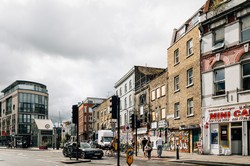Social sustainability in compact neighbourhoods
The COMPACTABILITY (Contribution of compact neighbourhoods to social sustainability) project investigated the social sustainability of compact neighbourhoods in four case study neighbourhoods in Germany and the United Kingdom. The main research questions centred on: key qualities of the compact neighbourhood and social sustainability, measurement of the indicators, and their interconnectivity. Researchers collected data on two areas in Berlin (Klausenerplatz and Samariterkiez) and two in London (Kilburn and Bethnal Green). The three main topics related to urban form, social activity and social sustainability. Urban form analysis generated in-depth knowledge about the basic qualities of neighbourhood space. Social activity mapping offered insights into spatial, gender and age patterns of social activities within neighbourhood public spaces. For the third topic, various analyses revealed the inhabitants’ perceptions and ratings regarding different qualities of social sustainability. All four cases show considerable differences in terms of urban form. For example, the German cases have higher population densities and have more mixed land use than the British cases. Moving was, in all cases, the most dominant activity by far. No significant gender difference was found regarding total number of activities in the neighbourhood space, but COMPACTABILITY did find significant age differences: elderly people and teenagers use neighbourhood space the least when compared to adults. In relation to the seven indicators used to measure social sustainability, basic urban facilities were deemed very accessible in all of the case study neighbourhoods. Walking and cycling were by far the most frequently used means for errands. Safety and security followed by home quality came in second and third, respectively. Indicators and related measures were scored from 0-200, giving a ‘social sustainability value’ for each neighbourhood. Boasting a social sustainability value of 128.40 Klausenerplatz was found to be the most socially sustainable neighbourhood, followed by Kilburn (122.02) Samariterkiez (121.53) and Bethnal Green (119.84). COMPACTABILITY’s outcomes shed light on different aspects of neighbourhood living. The research efforts have led to practical recommendations for promoting social sustainability in neighbourhoods.



